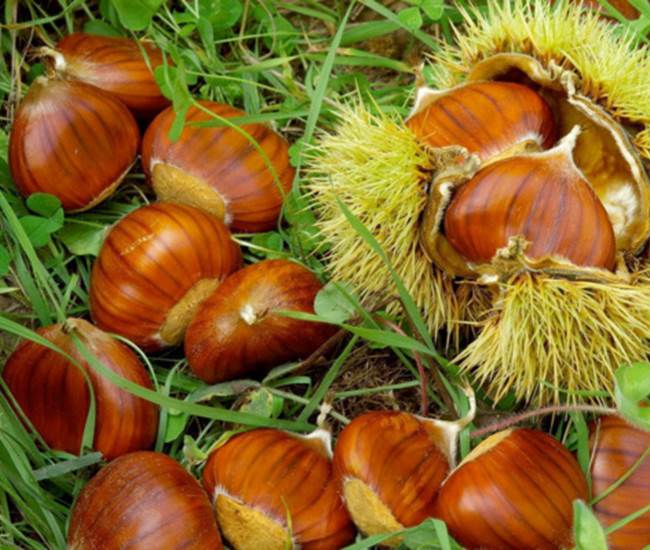
The flagship local products
SWEET ONION FROM CÉVENNES
The first onion in Europe to benefit from an AOC and a PDO, the sweet Cévennes onion is a high-end product.Its cultivation is perfectly adapted to the physical characteristics of the southern slope of the Cévennes, on small uneven plots, arranged in terraces. It is characterized by a melting texture and a sweet taste. It can be eaten both raw and cooked and contributes to the success of many recipes. Good for health, low in calories and rich in vitamin C, onion contains many minerals and trace elements with immune and antioxidant properties.
THE CHESTNUT OF THE CÉVENNES
A native tree of the Cévennes, the chestnut tree has long been described as a local breadfruit tree. Currently, it covers around 100,000 hectares of which 1,500 are harvested and intended for fruit production.Tasted grilled in a pan with holes over a wood fire or used in flour for your pancakes: the chestnut of the Cévennes is an authentic product which is consumed throughout the year with pleasure.
THE PELARDON
Pélardon is a soft, whole goat's milk cheese. Its rind is thin, its paste is white to ivory in color, with a homogeneous texture. It weighs a little more than 60 grams eleven days after renneting and contains 45% fat in the dry matter.
Pélardon is produced in a delimited area which extends from the Cévennes and Garrigues of Lozère, Gard and Hérault to the Montagne Noire and Hautes Corbières de l'Aude.
Pélardon must be matured for a minimum of eleven days from renneting, in order to allow it to develop its best aromas and its smooth and creamy texture.
